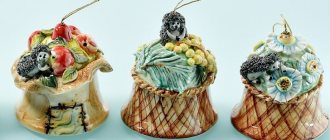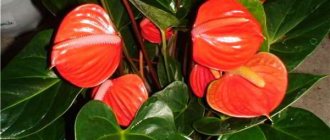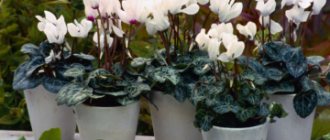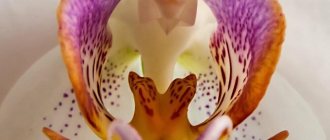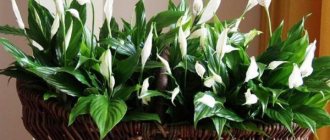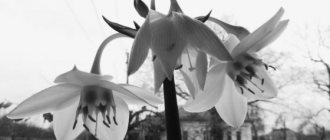There are many signs and superstitions known about indoor azaleas, some of them quite contradictory. Some argue that the poisonous plant has bad energy and should not even be brought into the house. Others claim that a flowering bush has a beneficial effect on the relationship between spouses and the family atmosphere in general. Let's not judge who is right and who is wrong. Let’s better study the properties of “rosewood” and draw our own conclusions.
Is it possible to keep an azalea at home according to signs?
Signs and superstitions associated with azaleas are positive. It brings comfort and beauty to the home, protects the owners from negative energy, and significantly reduces the number of family quarrels. Consequently, esotericists strongly recommend keeping a flower at home, given the fact that it is unpretentious.
Attention! Azalea is safe for allergy sufferers, although it may cause individual intolerance.
Of course, there are a number of rules and conditions for keeping plants at home. This includes such factors as the level of illumination, humidity, and watering features. Take into account its location at home. It happens that everything is taken into account, but the flower fades for no apparent reason. This is a sign of its active functioning, protecting the home and household from damage, the evil eye, and negativity.
Color matters
Before buying a plant for yourself or as a gift to a loved one, study the symbolism of color, according to which each color of an azalea carries a secret meaning:
White
Symbolizes truthfulness, innocence, romance, tenderness, spirituality. An azalea with white flowers will bring a sense of celebration and joyful emotions to your home. Place it in your home greenhouse and the plants growing nearby will sparkle in a new way. This flower is good to give to a very young girl or to decorate a banquet hall with it for a celebration.
Red
Red color is life itself, passion, love. Give a red potted azalea to your beloved, it will tell about your feelings better than any words.
Yellow
Yellow azalea will bring a sunny, optimistic mood and good mood to your home. When you look at a flowering plant, you will feel a sense of celebration, a feeling of fun and warmth. When you receive a rhododendron with yellow flowers as a gift, you should know that the giver wishes you happiness, prosperity and wealth.
What does azalea symbolize?
Azalea is a symbol of health; it is useful as a medicine, but in very small doses. The petals are applied to the eyelid that has stye. And the leaves are infused and used to improve heart function.
Attention! The plant is poisonous if consumed in large doses, so it is important to keep it out of the reach of children and pets.
Having studied the properties of azalea as a home amulet, we can say with confidence that it symbolizes family values. Possessing strong energy, the flower is able to eliminate any disorder. In Japan, the plant is called intoxicating passion. There it is customary to give azalea to lovers, not only because of the ardor of feelings, but because the flower is really beautiful.
How can it be dangerous?
Azalea does not emit dangerous allergens and does not emit an unpleasant odor. The plant can be harmful only for people with individual intolerance. However, there are a sufficient number of medical products that can neutralize the effects of allergens.
Despite such positive qualities of the entire species as a whole, the Indian azalea can become a problem . The extract of its leaves, if ingested, will cause pain and cramps in the intestines.
Signs and superstitions about azalea
It happens that a superstitious person takes good care of the flower, provides it with the necessary conditions for growth, protects it from children and pets, but the azalea withers. This is a direct sign that the plant is absorbing negativity, perhaps a serious illness of someone in the household. It is also believed that someone from the outside could have caused damage or the evil eye, envy, and the azalea takes all this upon itself.
There are signs with azalea for unmarried people. If someone gave a free girl this flower, which dried up literally within a few days, it means that the giver has selfish thoughts towards her. When the gift began to bloom and become saturated with colors, this is a sign of an imminent romantic relationship.
Attention! Azalea will become a symbol of the new union and will do everything to make it a success.
If a flower pot falls and breaks, it is believed that something negative follows, such as strong shock, anxiety and fear. But a lushly blooming azalea, pleasing to the eye, means that everything is smooth in the life of this family, and you can take on new beginnings.
Myths, legends
Azalea got its name in Ancient Greece and is translated as “dry.” The slightly strange name is due to the fact that sometimes the exotic plant resembles a dried bush. But after the buds appear and bloom, azalea deserves more epithets - “juicy”, “fragrant”, “bright”.
There are many legends about the appearance of this luxurious plant. The most mythical is the one associated with elves.
Legend of the Elves
One day, during a fire, a family of elves was forced to leave their homeland in order to hide from the deadly elements. Having reached the forest, the elves saw that there was not a single free tree left. Only flowers remained unoccupied, but they refused shelter to the strangers. And only one nondescript bush gave shelter to the fire victims.
Waking up, the elves decided to thank the merciful plant. And at sunrise, the dry branches of the bush were covered with many amazingly beautiful flowers, eclipsing those plants that had refused the refugees a place to stay for the night.
The Legend of the Dead Warriors
After another victory, the Greek warriors decided to rest and settled in the meadow where the ancestors of the indoor azalea grew. After feasting on the honey of unknown plants, they fell asleep and never woke up. As it turned out later, the soldiers received drug poisoning due to spending the night in rhododendron thickets. The intoxicating scent of the predecessor of modern azaleas is considered the second elven gift.
The Legend of the Sisters
One day, a gypsy camp decided to stop on the lands of the Maharaja. Among the inhabitants of the camp were sisters: the cheerful, lively dancer Aza and the thoughtful fortune teller Leah. Aza’s laughter left no one indifferent. Leah loved to sit alone, sad about something of her own. Being engaged in predicting human destinies, she could not predict her fate.
One day the gypsies received an invitation from the Maharaja, who was organizing a holiday in the palace and wanted entertainment. After the feast, the Maharaja turned to Leah with a request to tell his fortune and heard terrible things. Leah predicted a terrible misfortune for him - a flood that would take the lives of everyone except the Maharaja's youngest son. The Maharaja's anger was terrible. He ordered all the gypsies to be killed.
By some miracle, only the sisters Aza and Leah were saved. But suddenly, at the very foot of the mountain, a huge stone fell on the girls. When the girls' bodies were discovered by the gypsies, one of them was still breathing heavily. Barely having time to whisper - Aza... Leah, the girl died. Later, at the site of the death of the young gypsies, a bush of amazing beauty grew in their common grave. It was called azalea.
Legend of the Bird
The soul of one murdered king moved into a cuckoo. Arriving in the garden, she began to crow bitterly. Blood flowed from the bird's beak and fell onto the bush. In place of the red drops, the most beautiful flowers began to grow.
Now you can evaluate the benefits and harms of indoor azaleas yourself, knowing everything about the flower that is known in modern esotericism. All you have to do is choose the appropriate color, surround the flowering shrub with care and place it in the right place (as required by Feng Shui).
Features of caring for an azalea flower
At home, it is necessary to observe the order of the seasons, because azalea has a certain time for flowering, fruiting and dormancy. She is shade-loving, which means the light should be diffused, no direct hot sunlight.
In spring, keep the temperature from 16 to 20 °C, in winter about 10 °C, from June to November the temperature should not exceed 23 °C. In summer the flower is kept in partial shade, but in spring you may need to use a fluorescent lamp to provide bright light for about 13 hours for abundant flowering.
Photo gallery
Among them there are endangered species listed in the Red Book: Pontic azalea (Rhododendron luteum): Forie rhododendron (Rhododendron fauriei); Schlippenbach's rhododendron (Rhododendron schlippenbachii).
Where is the best place to put the plant?
Considering the shade-loving nature of the plant and the fact that the dormant state lasts almost two seasons, azaleas can be placed not only on window sills. It decorates the hallway, bathroom, living room.
Due to its toxicity, the flower should be kept away from children and pets.
Attention! Azalea can cause choking attacks and allergic reactions, so you should not keep them in the children's room.
It is noteworthy that it is not recommended to place plants on window sills, especially on the south side. It is better to keep them on a table or decorative stands about 1 m from the window. During the heating season, azaleas are moved away from radiators and heaters. In addition, they do not get along next to vines, as well as strongly growing flowers.
Be careful!
It is known that some varieties of rhododendron contain a dangerous neurotoxin - the glycoside andromedotoxin. In this regard, many are interested: is indoor azalea poisonous or does it contain no dangerous substances? We answer: the house plant contains poison in the leaves, flowers and stems. Therefore, if there are small children, cats or dogs in the house, it is better to put the flowering bush in the most inaccessible place.
If a child or pet reaches out to a brightly colored plant and tastes the leaf, signs of severe poisoning will not be long in coming. The first to be affected are the central nervous system and the heart muscle. The first signs of poisoning appear after 15 minutes. If the victim is not given timely first aid, he will die three to four hours after eating the azalea.
If your plant suddenly falls to the floor and part of a leaf or flower is missing, take a close look at your child. Causes of concern should be:
- profuse drooling;
- general weakness, drowsiness;
- nausea, vomiting;
- severe abdominal pain;
- complaints of a burning sensation in the mouth;
- diarrhea;
- too weak but frequent pulse;
- rapid breathing;
- pale tongue;
- convulsions;
- paralysis of arms and legs.
If at least several of the described symptoms are present, immediately call an ambulance and provide first aid. Rinse the stomach with a weak solution of manganese, induce profuse vomiting and give activated charcoal.
Briefly about reproduction
This plant is propagated by stem cuttings. The most optimal time for reproduction is summer .
- Semi-lignified cuttings with buds must be planted in the ground.
- Any flower buds that appear should be removed immediately.
- A few months later, the cuttings are planted in a pot.
We invite you to watch a video about how to propagate azaleas:
Indoor rhododendron: care after purchasing in a store - replanting
After purchasing, the plant should be left for some time in its usual pot, so the azalea will better adapt to new conditions. After about a week, it is necessary to transplant the plant into new acidic soil. It is better to buy soil in a store. If you prepare the substrate yourself, be sure to check the acidity level. To do this you need to take litmus paper. The normal value is 4-4.5 pH.
Indoor rhododendron: care after purchasing in a store - replanting
When making your own soil for rhododendron, you need to take:
- 1 part peat;
- 1 part river sand;
- 2 parts of coniferous land.
A drainage layer must be installed at the bottom of the pot to prevent root rotting. Young specimens need to be replanted every year, adults - once every 2 years in a wide, but not deep pot.
China
“Chinese botanists have noticed that certain plants of the heather and nightshade families, having stamens whose anthers open with pores upward, are strong hypnotics, and all these species in the aggregate - azalea, andromeda, rhododendron and hyoscyamus - are under this heading.”
MMCH, p.29
Main varieties:
- Naoyang hua, or yangzhi chi - lit. “goat-stupefying flower,” a species of hyoscyamus;
- Azalea procumbens, or “tiger flower” - Azalea pontica.
In the northeastern provinces, the hills are adorned with azaleas in lush colors, especially near Ningpo and Wenchou. It is difficult to express in any way the charm of the azalea-covered mountains, where everywhere a multitude of flowers of dazzling and superb beauty captivate the eye.
The dried flowers of these beautiful but poisonous plants have preventive properties, which are prescribed for rheumatism, paralysis, bronchitis, toothache, abscess, etc., according to the Chinese principle that one poison should neutralize another.
EVSI, p.29
A favorite motif in painting and decorative arts.
A symbol of the fair sex, feminine grace, as well as great abilities. Ephemerality, transience.
Our ancestors always bred some plants with special trepidation, while avoiding others. What contributed to this? Each plant has its own answer. However, do not forget that before buying an indoor flower, you need to ask what sacred meaning is hidden behind its petals.
Species diversity
Homemade
- Indian azalea (Rhododendron simsii);
- Japanese azalea (Rhododendron obtusum).
For open ground
- Deciduous rhododendrons : yellow (Rhododendron lúteum); Daurian (R. dahuricum L); Ledebourii (R. ledebourii); Canadian (R. canadense); Schlippenbach (R. schlippenbachii).
- Evergreens : golden rhododendron (R. auréum); Adams (R. adāmsii); Yakushimansky (R. yakushimanum); Catawbiense (R. catawbiense).
Growing at home
Let's look at 3 common methods of planting azaleas, which have significant differences among themselves.
Seedlings
Best suited for a plant that was purchased recently. Planting is carried out in the spring after the flowering period ends. To do this you need:
- Place the pot of azaleas in water to moisten the soil and root system. 20 minutes will be enough.
- After this, you need to remove the flower from the pot and use a knife to cut it into 2-3 parts. This must be done carefully so that the root system is not damaged. If possible, it is best to untangle the tangled roots by hand.
- Without shaking the soil from the roots, the plant should be immediately planted in a pre-prepared pot that contains a drainage layer.
Seeds
Not the easiest way, but also popular:
- It is also held in the spring . The seeds of the plant need to be mixed with sand, after which they are ready for sowing on the surface of the soil.
- Crops need to be covered with film . There should be high humidity inside and a temperature between 23 and 25 degrees Celsius.
- After 3-4 weeks the first shoots will be noticeable . After leaves appear on them, they need to be picked. If the seedlings are 12 cm high, they should be planted in separate pots.
Cuttings
Thanks to this planting method, after 2 years the gardener will be able to enjoy mature plants. The landing principle is as follows:
- It is necessary to cut cuttings from the tops of last year's shoots.
- Rooting is carried out in greenhouse conditions. To do this, you need to deepen the cuttings 2 cm into a light, loose substrate. Then they need to be watered moderately and also sprayed with water. The greenhouse should be ventilated regularly. Temperature: 25 degrees Celsius.
- When the cuttings have their own shoots, they can be taken from the greenhouse. Then plant the plants in pots.
Read more about the azalea root system and how to root the plant here.
When planting azaleas, it is very important to choose the right soil so that the rather finicky flower to care for will feel great both during normal propagation and when grown in a trunk.
